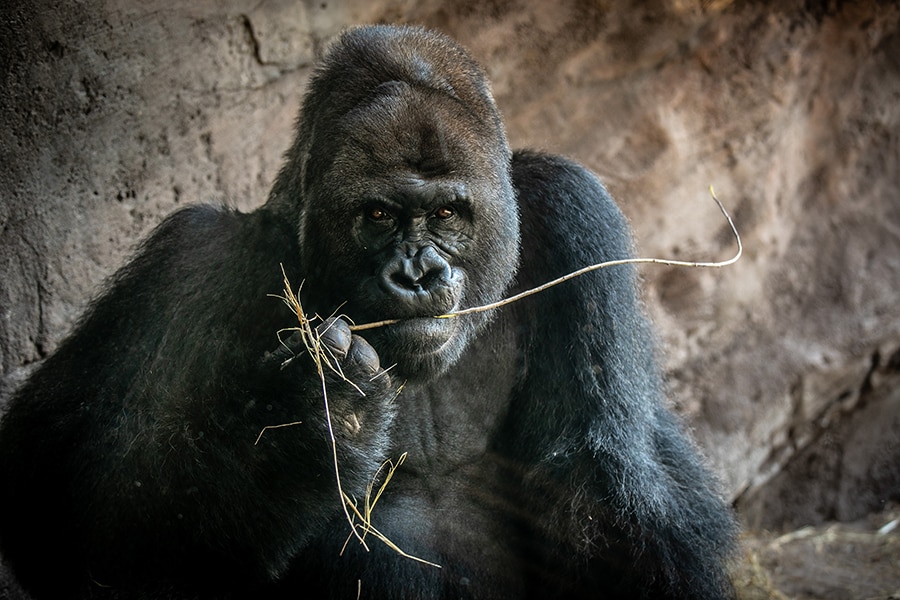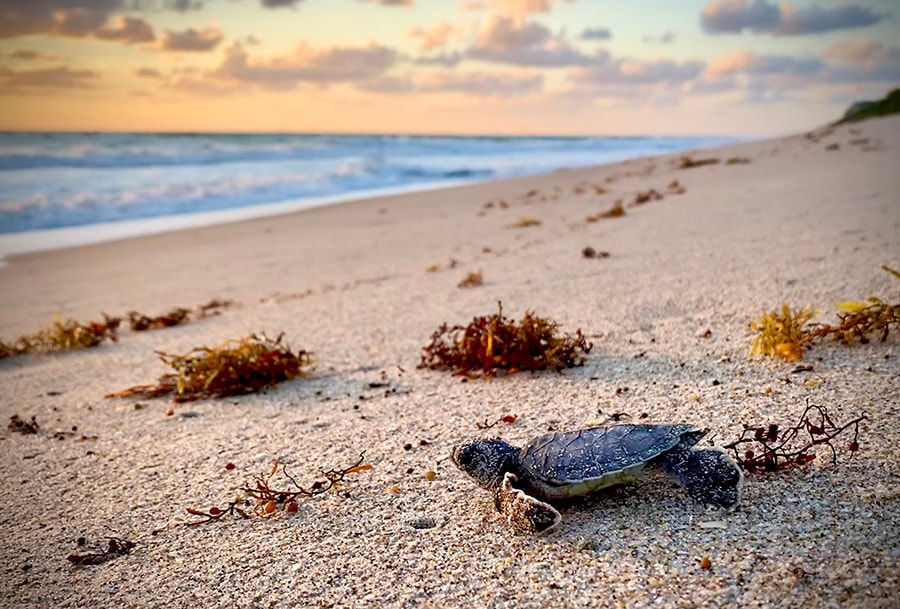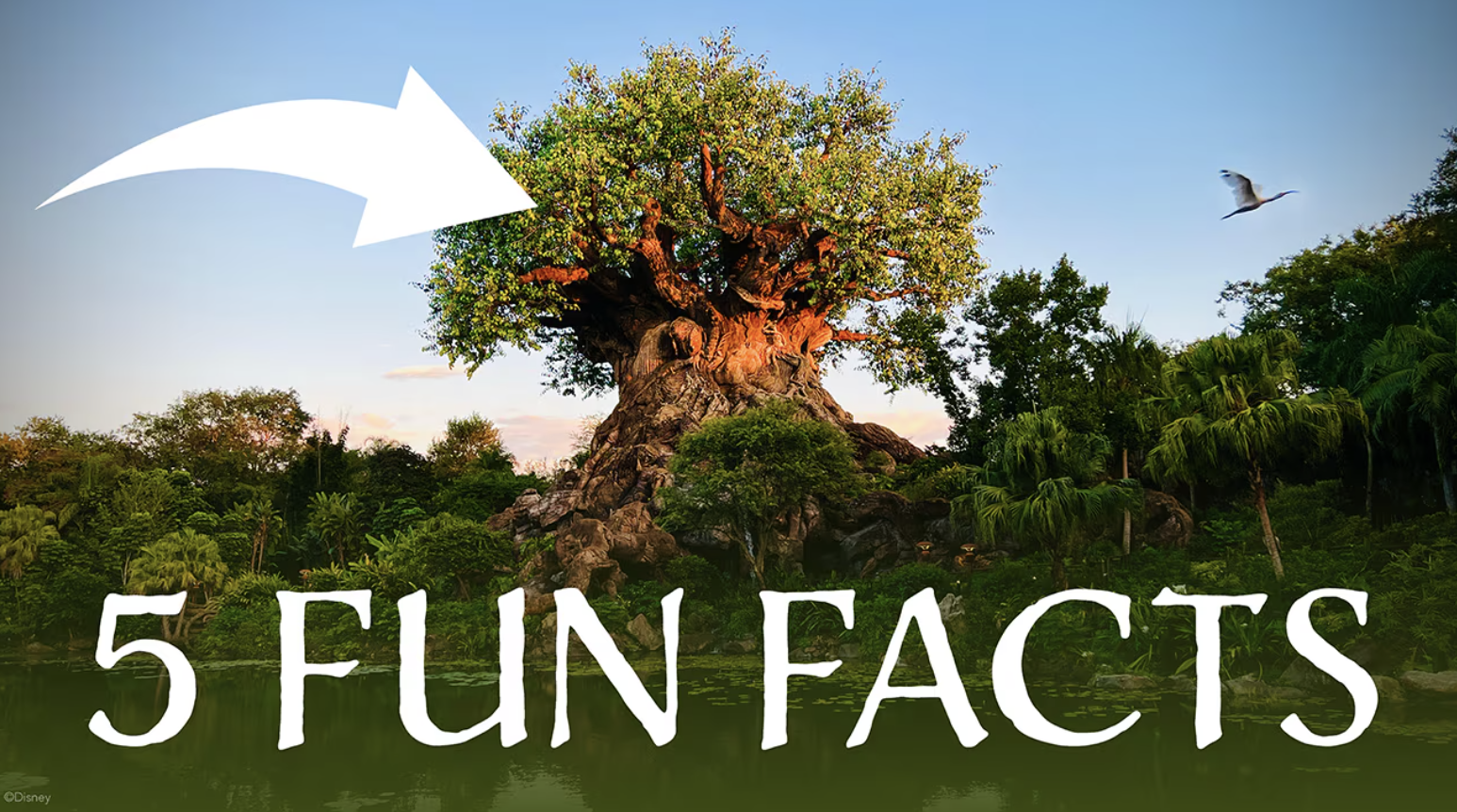If you ask me, there is no better place to celebrate our planet than at Walt Disney World.
The magic of nature surrounds us, and we get to inspire guests to take meaningful action for a healthier planet for all who call it home!
Here are five fun facts we’re exceptionally proud of:

1. 5,000 Animals, 300 Species at Disney’s Animal Kingdom
Disney’s passionate veterinarians, nutritionists, animal keepers, educators and scientists deliver the absolute best animal care to more than 300 species and 5,000 animals across the resort.
As an accredited member of the Association of Zoos and Aquariums (AZA), Disney’s Animal Kingdom has collaborated with renowned experts to help increase populations of endangered and threatened species. Following AZA Species Survival Plans (SSP), we have welcomed the births of a variety of animals just in the last year including cotton-top tamarins, an okapi, a yellow-backed duiker and, most recently, an adorable African elephant calf.
This level of care not only allows us to welcome new babies but also benefits our older residents too. Take our 43-year-old western lowland gorilla Gino who has captured the hearts of our cast members and guests for the last 26 years here at Disney’s Animal Kingdom. His cooperative nature has allowed our animal care experts to pioneer ultrasound techniques, benefiting gorillas globally. Gino’s collaborative efforts with his keepers have also led to advancements in dental care techniques for gorillas in our park, ensuring their overall health and wellbeing.

2. Disney Animals Consume 10,000lbs of Food Daily
Feeding thousands of animals is no easy task and it takes dozens of animal nutritionists to prepare and dish out more than 1,200 individual meal plans for animals across the resort.
The Animal Nutrition Center (ANC) provides the highest quality of animal nutrition as part of the veterinary services and preventive care program. From fruits and veggies to carnivore diets – each animal has their own diet plan and with so many mouths to feed, an estimated 10,000 pounds of food is served daily, no pixie dust required.
One more major win: The ANC is a Platinum-certified Zero Waste facility and leads the way in diverting waste and ensuring we are contributing to environmental sustainability and animal wellness.

3. 20,000 Sea Turtle Nests at Disney’s Vero Beach Resort
When it comes to conservation leaders – look no further than our incredible cast members.
Nearly 150 cast members from Disney’s Animals, Science and Environment have provided their expertise and efforts in the past year alone to help boost our knowledge and help wildlife species at Disney World and around the globe. Some of these achievements include providing more than 500 nesting compartments across Disney World for declining purple martin songbirds, reintroducing thousands of butterflies back into the wild and helping monitor and record over 20,000 sea turtle nests at Disney’s Vero Beach Resort.
Cast members and guests have also helped the planet by supporting the mission of the Disney Conservation Fund (DCF) which, since 1995, has awarded $125 million to nonprofit organizations dedicated to working with communities to save wildlife, inspire action and protect our planet.
Each day, our guests get the chance to learn about our top-notch animal care and conservation mission through various programs, tools and resources. Disney has provided over 50 million experiences to connect youth with nature, with many of these taking place here at Disney World.

4. 75 Unique Pollinators Throughout Walt Disney World
From bees and bats to birds and butterflies, pollinators are necessary for a functioning ecosystem. Almost a third of the food we eat comes from plants that depend on pollinators!
Disney’s dedication to conservation is un-bee-lievable. The Disney Conservation team is collaborating with partners to expand habitats for pollinators across Disney World and leading research and monitoring efforts that have shown more than 75 species of pollinators using these habitats! One of our most recent pollinator-friendly gardens is near a 270-acre 50-megawatt solar facility, which opened a few years ago. DCF has also supported more than 20 projects across North America working to save pollinators like butterflies.
Want to learn how to make your own pollinator garden at home? Every small, positive action makes a difference!

5. Disney’s Kilimanjaro Safaris Larger Than 83 Football Fields
There’s nothing quite as magical as your first animal sighting out on Kilimanjaro Safaris. As you make your way through the lush landscape, you see a variety of comfortable and well thought out spaces for each of our animals to thrive. With over 100 residents on the safari and representing 30 different species, you can imagine that the entirety of the safari is quite big, and it is indeed. At 110 acres, Kilimanjaro Safaris is big enough to house 83 football fields. Most importantly, the terrain has been designed to look and feel like their African habitats, so animals feel at home with their natural behaviors and instincts.
The attention to every detail is what has allowed us to welcome threatened and endangered species like the African elephant, the Hartmann’s Mountain zebras, white rhinos and more species in our care!
To learn more about Disney’s efforts to help the planet on this Earth Day, and every day throughout the year, visit DisneyPlanetPossible.com.

